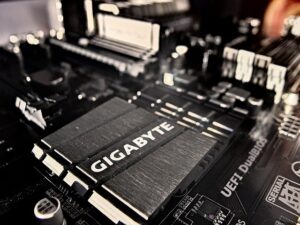Machine learning integration with Linux is revolutionizing the boot process by personalizing it according to user behavior and preferences. This innovative approach dynamically adjusts the loading order of services and applications to prioritize what users frequently need, thereby optimizing system performance and offering a tailored experience from startup. The system's machine learning algorithms analyze past interactions to predict future requirements, ensuring that the most essential services are ready first. This adaptive process enhances flexibility and user experience by intuitively configuring resources for optimal efficiency, considering different hardware and software configurations. As the system learns over time, it refines the boot process for a smoother, more contextually appropriate startup each time. Machine learning with Linux is thus emerging as a cutting-edge solution to create intelligent, responsive, and user-centric systems that significantly improve the initial interaction with devices. This integration represents a significant advancement in making Linux systems more efficient and attuned to user habits, redefining the user experience from the moment of powering on.
machine learning, Linux boot process, customization, user experience, flexibility, system optimization, boot time decision-making, personalization.
In an era where technology evolves at a breakneck pace, the quest for greater system flexibility and personalization has never been more pertinent. This article delves into the transformative potential of machine learning to revolutionize the Linux boot process. By exploring the synergy between these two powerful domains, we uncover how Linux systems can adapt their initial startup sequence to cater to individual user preferences, enhancing both efficiency and user experience. Join us as we navigate the components of a Linux boot process and chart the course for their integration with machine learning algorithms, paving the way for smarter, more intuitive system behavior right from the outset.
- Exploring the Synergy of Machine Learning and Linux in Crafting a Customizable Boot Process for Flexibility
- Understanding the Components of a Linux Boot Process and Their Potential for Machine Learning Integration
- Implementing Machine Learning Algorithms to Enhance Boot Time Decision-Making and User Experience Personalization
Exploring the Synergy of Machine Learning and Linux in Crafting a Customizable Boot Process for Flexibility

The fusion of machine learning and Linux opens a myriad of possibilities for tailoring the boot process to diverse user needs, enhancing system flexibility upon startup. Machine learning algorithms can analyze user behavior patterns and preferences, adapting the Linux boot sequence accordingly. This adaptive approach allows for a dynamic loading order of services and applications, prioritizing them based on the user’s historical interactions or predicted requirements at system launch. The synergy between these technologies enables a more intuitive and personalized experience, where the boot process can be refined over time to better suit the user’s workflow or task-oriented habits.
Leveraging Linux’s robust framework, developers can implement machine learning models that intelligently manage system resources during the boot phase. These models can predict optimal configurations, balancing performance and efficiency by loading components as needed rather than following a static script. This means that the system can adjust its boot process to fit different hardware setups or software environments, ensuring compatibility and streamlining the user experience across various platforms. The potential for machine learning with Linux to revolutionize the boot process lies in its ability to learn from each boot instance, continuously improving the user’s initial system interaction to be as seamless and contextually relevant as possible.
Understanding the Components of a Linux Boot Process and Their Potential for Machine Learning Integration

The boot process in Linux is a critical sequence that initializes the system’s hardware and loads the operating system, offering an opportune entry point for machine learning integration. This process begins with the execution of the kernel from the boot loader, which sets up the core components of the OS, including drivers for hardware communication, file systems for data storage management, and system services that facilitate user-level applications. Each stage of this boot process presents potential touchpoints for machine learning algorithms to enhance performance or add predictive capabilities. For instance, kernel modules can be dynamically loaded based on machine learning predictions for optimized resource allocation, or the selection of file systems could be informed by historical usage data analyzed through ML techniques.
Furthermore, as the system progresses from a bare-metal state to a fully operational environment, the initialization scripts and services present additional avenues for machine learning with Linux. Here, machine learning can tailor user experiences by adapting system settings or software configurations based on user behavior patterns. This could range from adjusting display brightness according to ambient light sensor data to customizing network settings based on usage patterns. The flexibility of the Linux boot process, with its modular and well-defined stages, allows for a high degree of personalization and automation, which can be significantly augmented by machine learning algorithms, leading to more responsive, efficient, and intelligent systems.
Implementing Machine Learning Algorithms to Enhance Boot Time Decision-Making and User Experience Personalization

Machine learning algorithms are increasingly being integrated into various facets of computing, including the boot process on Linux systems. By leveraging predictive analytics and pattern recognition, these algorithms can significantly enhance decision-making during system startup. The implementation of machine learning within the Linux kernel or as a user-space service can analyze past user behavior, application usage patterns, and resource allocations to optimize the boot sequence for a more efficient and personalized experience. For instance, if a user consistently runs certain applications upon logging in, the boot process can be customized to load necessary drivers and services ahead of time, thus reducing the overall boot duration.
Furthermore, as machine learning models are exposed to more data over time, they can dynamically adjust the boot process based on real-time feedback and changing user needs. This adaptive learning capability ensures that the system not only becomes faster at booting but also tailors the user experience to individual preferences, potentially predicting which workspace configuration a user prefers or what applications should be open upon login. The integration of machine learning with Linux thus offers a dual benefit: it accelerates the boot process by making intelligent decisions based on usage patterns and personalizes the user experience for greater efficiency and satisfaction. This synergy between machine learning algorithms and Linux’s robust framework paves the way for a more intuitive and responsive computing environment from the moment users power on their devices.
Machine learning’s integration with Linux boot processes paves the way for a new era of flexibility and efficiency in system startup procedures. This article has delved into the transformative potential of combining these technologies, revealing how they can work synergistically to optimize the boot experience according to individual user preferences and system requirements. By understanding the components that constitute a Linux boot process and exploring their adaptability to machine learning insights, users and system administrators gain unprecedented control over the initial moments of system interaction. The implementation of advanced machine learning algorithms promises to streamline decision-making and personalize the user experience from the outset. As this technology matures, it is poised to become an indispensable component of Linux systems, offering a highly customizable boot process that caters to diverse needs without compromising on performance or security.





























